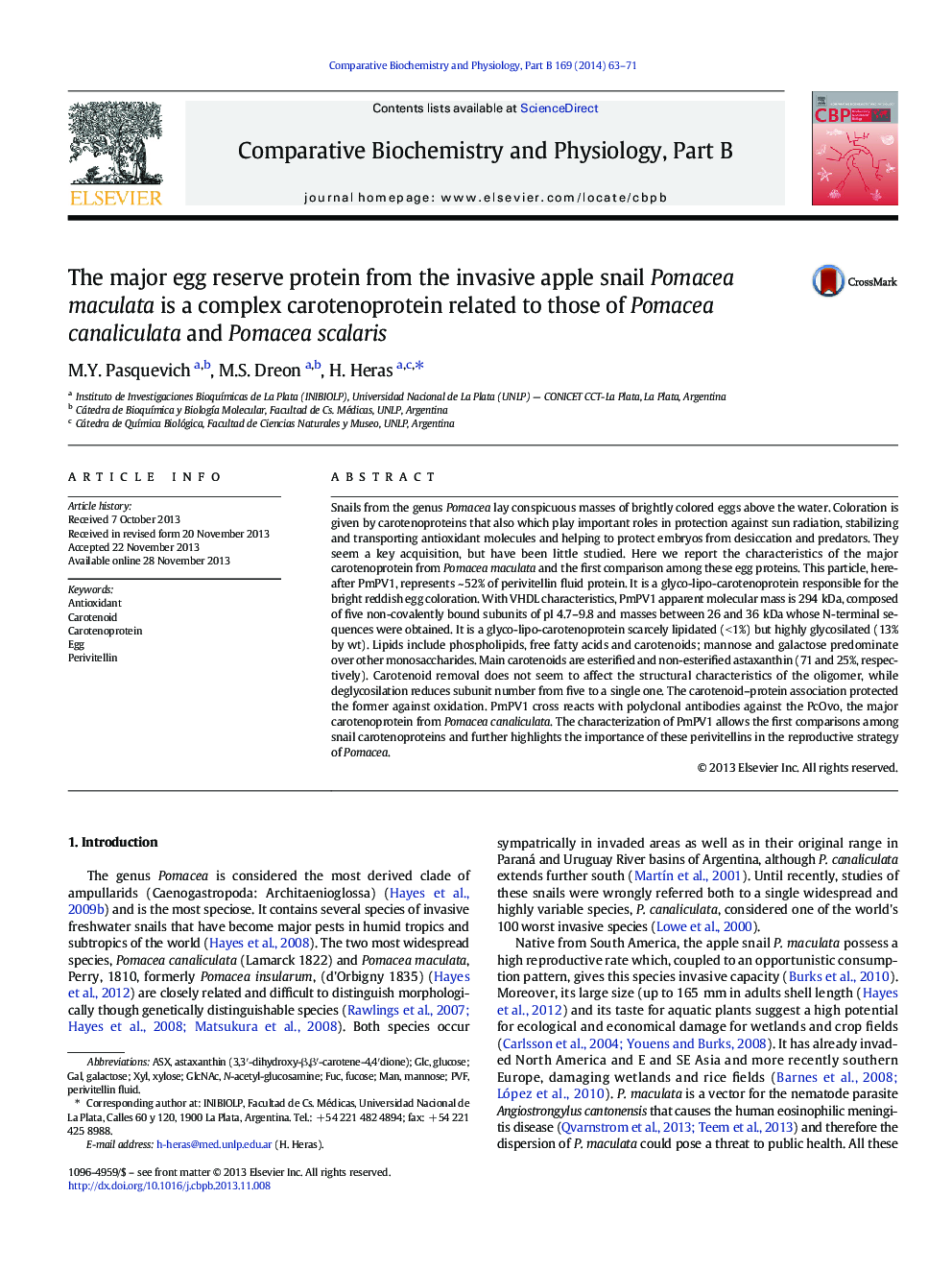| Article ID | Journal | Published Year | Pages | File Type |
|---|---|---|---|---|
| 8318946 | Comparative Biochemistry and Physiology Part B: Biochemistry and Molecular Biology | 2014 | 9 Pages |
Abstract
Snails from the genus Pomacea lay conspicuous masses of brightly colored eggs above the water. Coloration is given by carotenoproteins that also which play important roles in protection against sun radiation, stabilizing and transporting antioxidant molecules and helping to protect embryos from desiccation and predators. They seem a key acquisition, but have been little studied. Here we report the characteristics of the major carotenoprotein from Pomacea maculata and the first comparison among these egg proteins. This particle, hereafter PmPV1, represents ~Â 52% of perivitellin fluid protein. It is a glyco-lipo-carotenoprotein responsible for the bright reddish egg coloration. With VHDL characteristics, PmPV1 apparent molecular mass is 294Â kDa, composed of five non-covalently bound subunits of pI 4.7-9.8 and masses between 26 and 36Â kDa whose N-terminal sequences were obtained. It is a glyco-lipo-carotenoprotein scarcely lipidated (<Â 1%) but highly glycosilated (13% by wt). Lipids include phospholipids, free fatty acids and carotenoids; mannose and galactose predominate over other monosaccharides. Main carotenoids are esterified and non-esterified astaxanthin (71 and 25%, respectively). Carotenoid removal does not seem to affect the structural characteristics of the oligomer, while deglycosilation reduces subunit number from five to a single one. The carotenoid-protein association protected the former against oxidation. PmPV1 cross reacts with polyclonal antibodies against the PcOvo, the major carotenoprotein from Pomacea canaliculata. The characterization of PmPV1 allows the first comparisons among snail carotenoproteins and further highlights the importance of these perivitellins in the reproductive strategy of Pomacea.
Keywords
Related Topics
Life Sciences
Biochemistry, Genetics and Molecular Biology
Biochemistry
Authors
M.Y. Pasquevich, M.S. Dreon, H. Heras,
